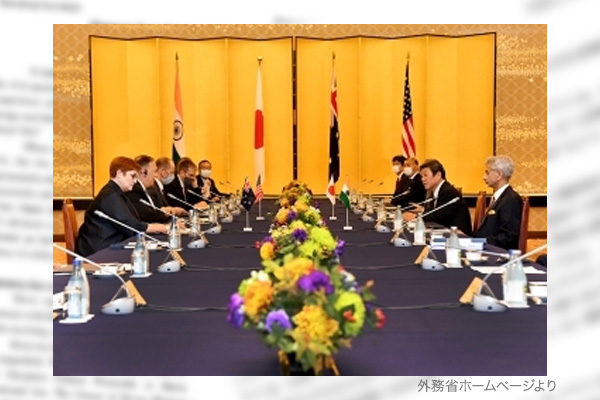The Australia-India-Japan-U.S. “Quad” is evolving in response to China’s muscular policies and aggressive actions. The four leading powers of the Indo-Pacific are moving toward formalizing the Quad to help strengthen the region’s weak multilateral security architecture, as the recent meeting of their top foreign-policy officials in Tokyo underscored.
Will the Quad turn into a concrete security arrangement? The U.S., Australia and Japan already have bilateral and trilateral security alliances among themselves. So, it really depends on whether India is ready for strategic collaboration in the quadrilateral framework.
Hesitation to strategic collaboration
India had been hesitant thus far for several reasons. One, it is the only Quad member to have faced a Chinese military invasion in the post-World War II period. Mao Zedong’s 1962 war resulted in the capture of some Indian territories.
Second, India is the only Quad member to share a land border with China, making it vulnerable to direct Chinese military pressure. China is not averse to ratcheting up such military pressure in response to an Indian political or diplomatic move that it views as unfriendly. India thus has to be more mindful of its geographic proximity to China than Japan, which is separated from China by a sea. In fact, the primary focus of the “free and open Indo-Pacific” strategy and of Australia, Japan and the U.S. is on the seas, whereas India’s main military threats are land-oriented.
Three, India has wondered whether it can count on the U.S. as a dependable friend. The U.S. has a record of disregarding even treaty-based obligations toward its allies. It was the U.S. silence over China’s June 2012 capture of the disputed Scarborough Shoal from the Philippines that emboldened China to embark on an island-building program in the South China Sea.
Four, India’s cautious approach to the Quad cannot obscure the fact that it has been most persistent in exposing China, including its violations of its nuclear and missile nonproliferation commitments; its unfair trade practices; its sabotage of UN Security Council reforms; and its Belt and Road’s neo-imperial ambitions. It speaks for itself that India has been the only Quad member to boycott all the Belt and Road summits hosted by China. India believed the other Quad members were hedging their bets by seeking better ties with China.
Five, India must confront Chinese military aggression on its own. Unlike Japan and Australia, it is not under the U.S. security umbrella. In fact, India currently faces Chinese territorial aggression in the Himalayas, which began in April when the People’s Liberation Army furtively encroached on some border areas in the northernmost Indian region of Ladakh.
Turning into security arrangement
The incursions have triggered the worst Himalayan military crisis since the 1962 war. The Chinese aggression has ensured the rise of a more antagonistic India, making it more likely than ever that the Quad will turn from a consultation and coordination mechanism into a concrete security arrangement.
Cooperation among the Quad members is now gaining strategic heft. For example, with last month’s Mutual Logistics Support Agreement with Japan, India now has such accords with all the Quad members. Quad members are boosting their joint defense activities and building military interoperability. This will contribute to peace and security in the Indo-Pacific.
Brahma Chellaney is a professor of strategic studies at Center for Policy Research, New Delhi.


